It’s your first time wearing a fuzzy sweater in three months. You can still smell smoke from last night’s backyard bonfire in the fibers. The cappuccino in your cup holder has been spiked with a pump of dizzyingly-sweet maple flavoring. And as you merge onto the freeway, a flare of sunlight makes your steering wheel sparkle—thanks to the cider donut sugar that now coats the wheel. Yes, friends. Fall has arrived. We are in Valhalla.
And this particular fall, I am chasing the toasty seasonal amenities with more intensity than usual. Because two weeks ago, I signed a book deal with Moon Guides, and the assignment is a guidebook about fall foliage trips in New England, the Mid-Atlantic, and a handful of farther-flung regions. This was not my idea. The team at Moon was searching for someone capable of writing a book like this; somebody with tree sap in their veins, crunched up leaves in their soul, and a passion for the earthly delights of fall. Somehow, I got the call, and I basically said YES without a moment of hesitation.
What this means for all of you, my dear Moss People, is that I am going to indulge my inner foliage freak this fall…and you are going to get some super hot, freshly reported intel about where to admire crimson and auburn leaves between now and November. A few of these dispatches will come from locales that I’m visiting, which will be more thoroughly featured in the guidebook (which hits shelves in 2027.) But the trails and landmarks that I will be sharing with you are most likely not going to be part of the book. In fact, you might even call these callouts a series of New England Deep Cuts.
And today, I want to kick off that series with a unique and broadly accessible trail in northeastern Vermont—a trail that takes you into the autumnal foliage, in the most literal and vivid sense. How? By inventively redefining the concept of a canopy tour.
Most of the time, a “canopy tour” involves putting on a harness with a pulley attached to it, climbing a set of stairs to a platform in a tree, and zipping along a suspended cable to an adjacent platform. You repeat this several times before rappelling back to the ground. In theory, it’s a really cool way to savor the tree canopy. But that theory doesn’t account for those of us with unpredictable anxiety about high places. I spent most of the time on my first (and only) zipline canopy tour feeling like I was holding my lunch down. The internal questions were relentless. What if the pulley malfunctions and I get stuck in the middle of the zipline? What if I slam into the hard edge of the next platform and break my leg? What if I screw up the rappel and fall to an untimely death?
The people at the Vermont Institute of Natural Science (VINS)—a nature sanctuary in Quechee that rehabilitates raptors—had a different idea for engagement with foliage.
What if you could build an elevated and ADA-accessible trail through the tree canopy?
Elevated canopy walkways are not a new invention. From Kew Gardens in London to Costa Rica’s Monteverde cloud forest, canopy paths offer quality time with the leaves, without the existential exposure of climbing trees or soaring between them. But the concept is somewhat under-explored in the U.S., considering how many woodlands we have here and the millions of visitors they draw each year. Prior to the VINS team joining the party, two of the best known canopy walkways in the U.S. were found amid the oak and hickory trees of Myakka River State Park in Florida, and at Michigan’s Dow Gardens. (This 426-meter path is currently the longest canopy walk in America.) New England, not one to be upstaged by the south and the Midwest, was overdue for a walkway like this. And in the fall of 2019, after a full year of construction, a 900 feet-long loop path—elevated by the trees themselves!—opened to the sauntering public at the VINS HQ; just in time for the colorful heights of Vermont’s fall foliage season.
The VINS Forest Canopy Walk has since become the star attraction of the place. Or at the very least, a co-star to the beautiful hawks that are still brought back to health at the Institute. (You can visit them at their enclosure, on the short walk from the VINS visitor center and gift shop to the Canopy Walk entrance.) Short enough to be walked multiple times but long enough to offer some intimate time with the leaves, the VINS walkway features an enormous tower with spiral stairs. From the top, you can admire not only the local woodlands but the blue band of the Ottauquechee River, as it starts its approach to the mouth of nearby Quechee Gorge. Not far from here, a somewhat smaller tower offers an “Eagle’s Nest” perspective of the woods. (The elevation of the viewing platform is located around the point where eagles will nest in the trees here.) And there’s also a contraption known as the Giant Spider Web—a 20-foot web made from three layers of netting, which is meant offer visitors the POV of a local spider. As the VINS website puts it, giant spider web enjoyers can “lie in wait” or “walk across a woven web high above the ground.” I opted to gingerly crawl high above the ground.
If you’ve spent any time at family-oriented nature centers or theme parks, then you’ve likely noticed that exhibits which offer the chance to temporarily move like animals are almost always the domain of kids. There’s a supposition at play here: that crawling across a replica of a spider web or gazing out from an imitation eagle nest offers little more than two-dimensional amusement for visitors young enough to be enthralled by Bluey or the dreaded Cocomelon. But there’s a more noble intention behind many of these exhibits—allowing people to walk in the pawprints of other creatures—and I’ve sometimes found it strange that this valuable and irresistibly fun experience is usually seen as something that we outgrow. If anything, adults are probably the demographic most sorely in need of spending more time amidst the gnarled branches of a nest or the threads of a web. After all, we’re the ones who make decisions about how humans interact with the natural world. And we have not been cutting the mustard these days.
So I was heartened to see kids and adults making good use of the VINS canopy path’s surprising interactive attractions in equal measure. In fact, the only people making use of the giant spider web were a couple who seemed to be seconds away from learning about what it’s like when two spiders make out “on a woven web high above the ground.” And I think the presence of these exhibits says something about the deeper spirit of the VINS canopy walkway. Traditional canopy tours—again, the ones that require climbing gear and cable burn-resistant gloves—don’t actually involve much engagement with the canopy itself. The leaves are just a backdrop for a sequential adrenaline rush. Technically, you are immersed in those leaves when you glide from platform to platform or begin your first rappel. But are you really there, sensorially?
I spent about an hour on the VINS canopy walk, circling the route thrice, spending time with each interactive exhibit, and watching others ooh-ing and ah-ing as they followed the walkway through the tree trunks. I don’t think I’ve ever had a foliage experience that went this hard—that clobbered me, in the best way, with the serene ambience of foliage that millions of us will be chasing over the next month or two. When people talk about the benefits of forest bathing, they’re usually imagining a slow, savory walk on a path through trees like the beeches and oaks at VINS. But a forest bathing session on an elevated canopy walkway engages the senses more forcefully, and makes it clearer that we are guests in the home of many creatures.
If nothing else, I hope more of us can take that away from this fall foliage season.
CLICK HERE for more information about the VINS Forest Canopy Walk


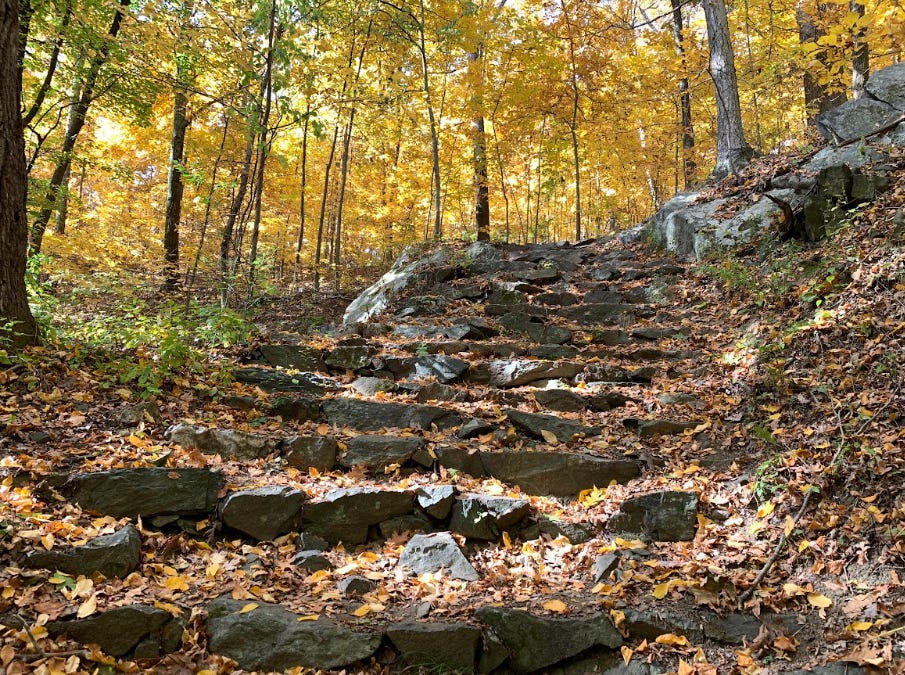

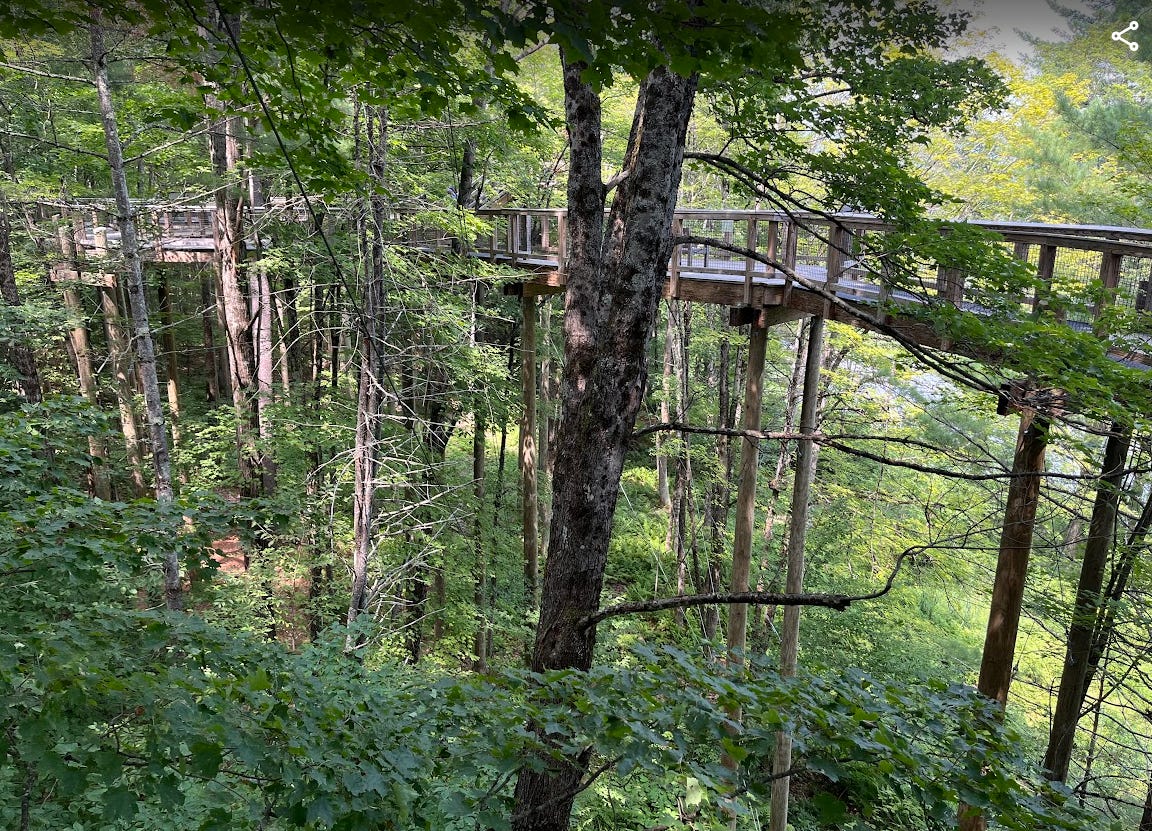
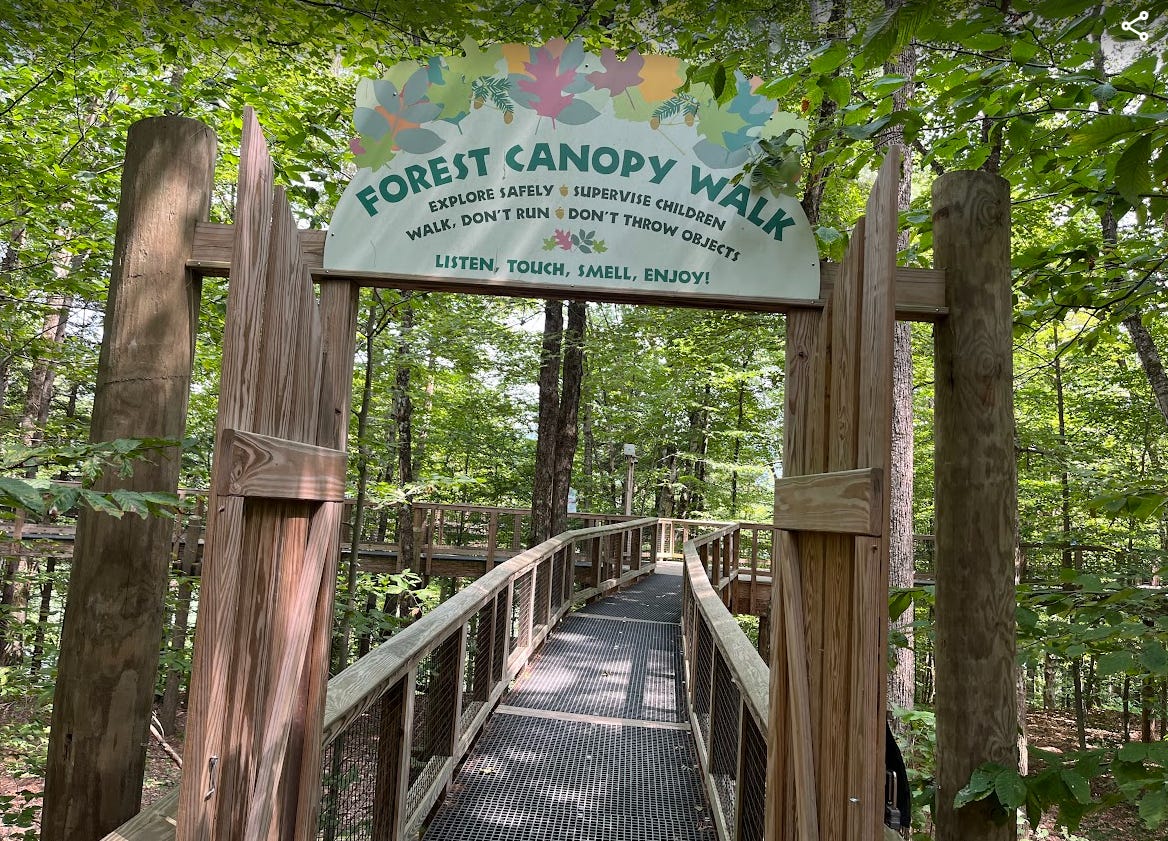
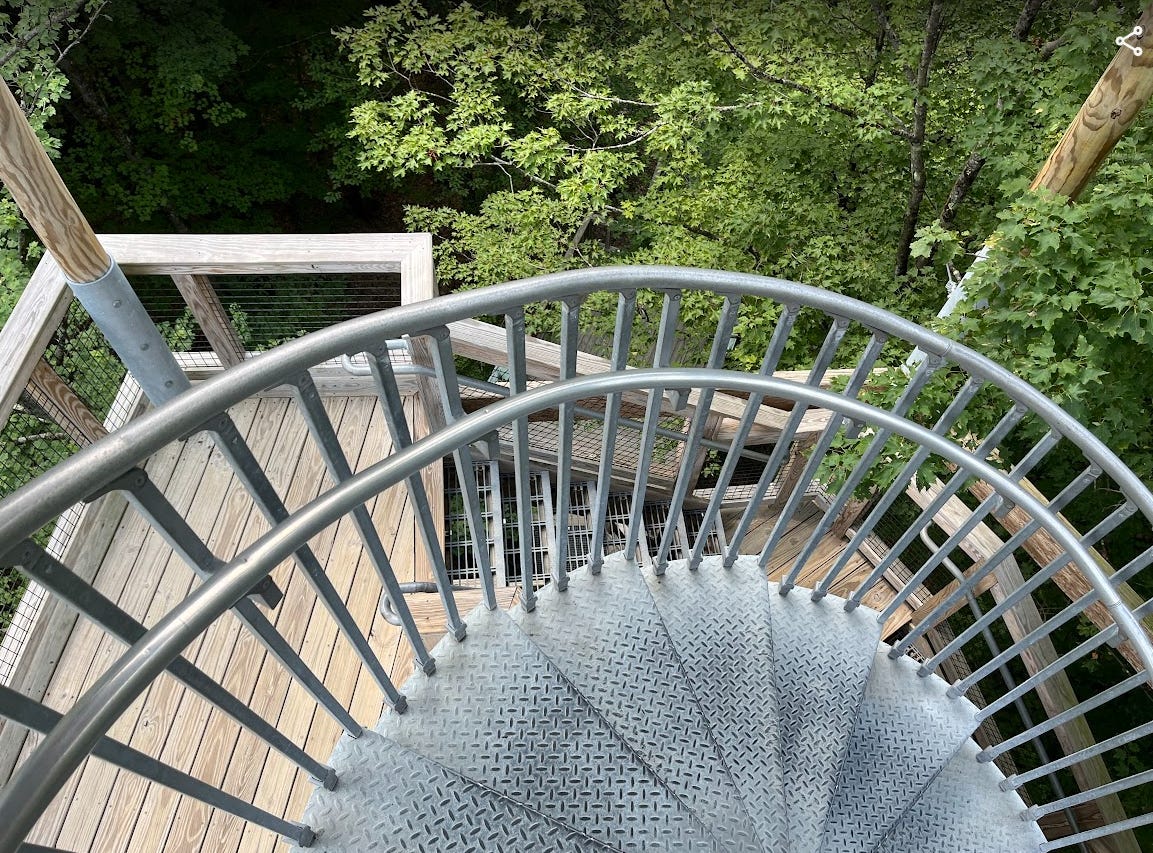
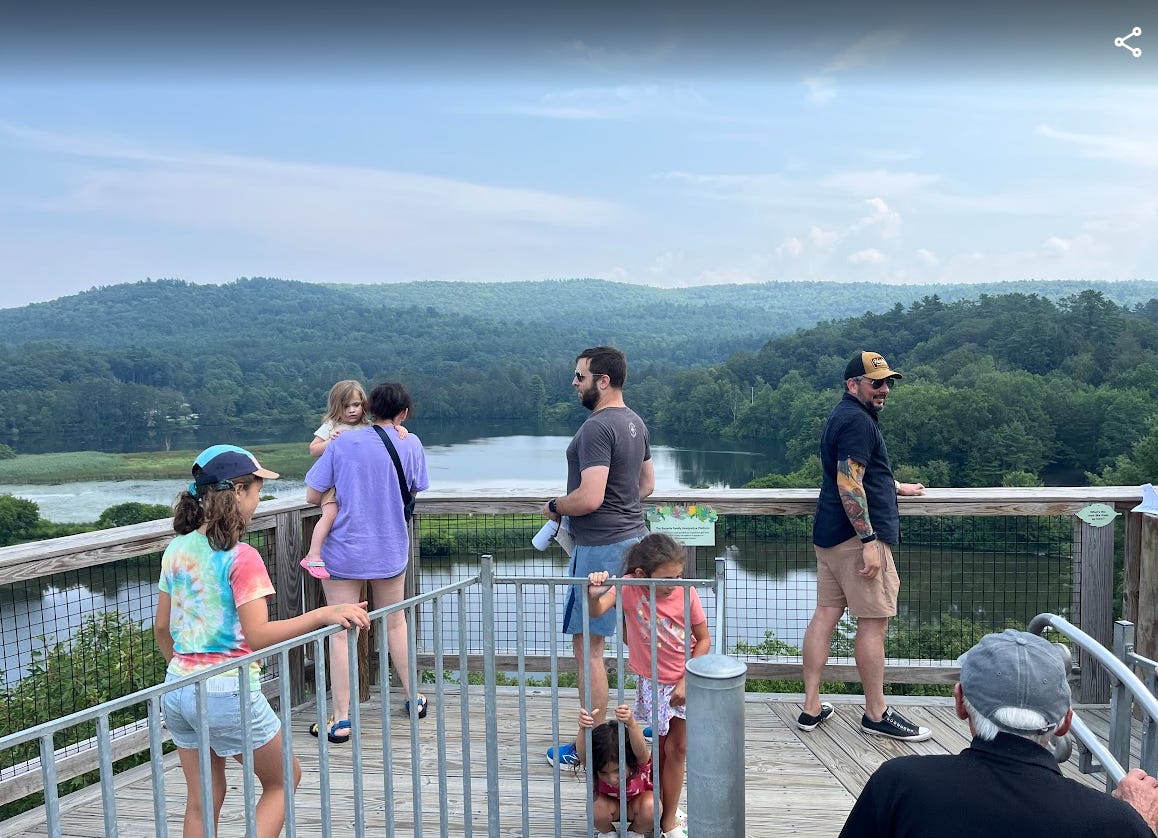
Love the image I’m left with of spiders making out.
A great one. Thank you Miles 🤓